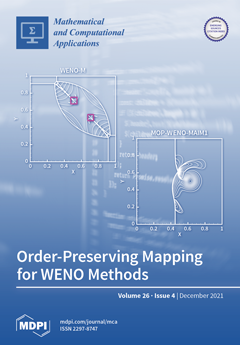Let
be a connected graph with
n vertices and
m edges. A bijection
is an edge labeling of
G. For any vertex
x of
G, we define
as the vertex label or weight of
x, where
is the set of edges incident to
x, and
f is called a local antimagic labeling of
G, if
for any two adjacent vertices
. It is clear that any local antimagic labelling of
G induces a proper vertex coloring of
G by assigning the vertex label
to any vertex
x of
G. The local antimagic chromatic number of
G, denoted by
, is the minimum number of different vertex labels taken over all colorings induced by local antimagic labelings of
G. In this paper, we present explicit local antimagic chromatic numbers of
and
, where
is the friendship graph with
n triangles and
v is any vertex of
. Moreover, we explicitly construct an infinite class of connected graphs
G such that
, where
is the join graph of
G and the complement graph of complete graph
. This fact leads to a counterexample to a theorem of Arumugam et al. in 2017, and our result also provides a partial solution to Problem 3.19 in Lau et al. in 2021.
Full article





